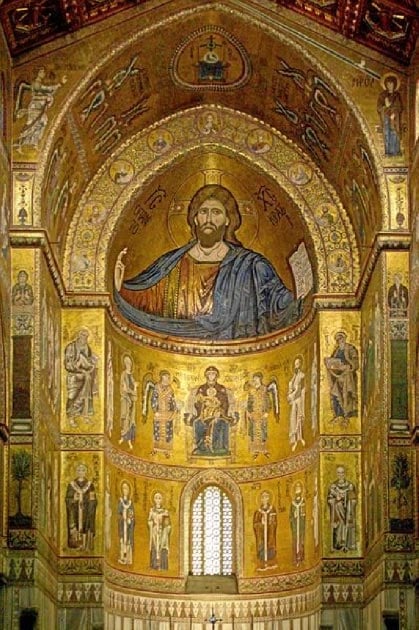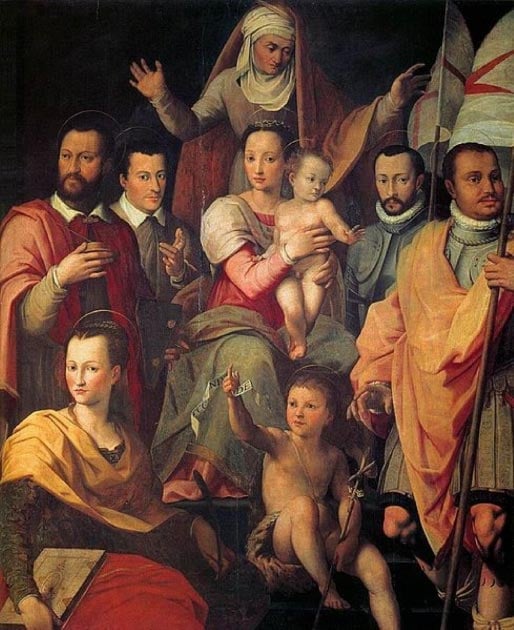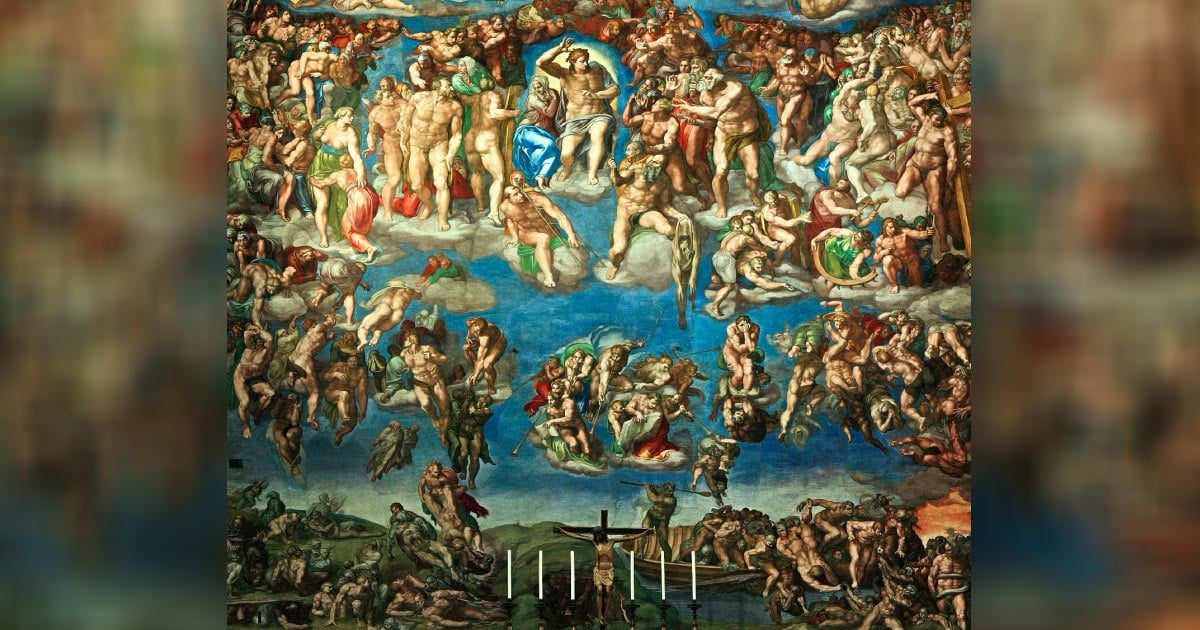The Renaissance: The ‘Rebirth’ That Changed the World
The Renaissance refers to the period in European history between the 14 th and 17 th centuries. As a historical era, the Renaissance was preceded by the Middle Ages, and succeeded by the early modern period. Alternatively, the Renaissance is considered more of an intellectual and cultural movement, rather than a historical period. Indeed, today, the Renaissance is commonly thought of as a time when Europe made great advances in the sciences and the arts, as opposed to the Middle Ages. Although the Renaissance is most notably connected with the Italian city-states, as it was there that this movement originated, over time the Renaissance would spread to other parts of Europe as well.
From Darkness to Light: The Origins of the Renaissance
The word ‘renaissance’ comes from the French language, and simply means ‘rebirth’. This term was made popular by the 19 th century French historian Jules Michelet, and became current in the English language during that time. This concept was further developed by Jacob Burckhardt, a Swiss historian who lived around the same time as Michelet. We owe our modern perception of the Renaissance largely to these two historians. The so-called ‘rebirth’ of Europe may be considered from two different angles. On the one hand, it may be taken specifically to mean the ‘re-discovery’ of classical texts and learning, and their application in the sciences and arts. On the other, it may refer more generally to the ‘revitalization’ of Europe as a result of such activities.
The word ‘renaissance’, however, was already in use long before Michelet and Burckhardt. In 1550, the word ‘renascita’, which is Italian for ‘renewal’ or ‘rebirth’ was used by Giorgio Vasari in his book, Le vite de' più eccellenti pittori, scultori, e architettori, which translates to mean Lives of the Most Excellent Painters, Sculptors, and Architects. Vasari, commonly considered to be Europe’s first art historian, wrote about the artistic development that was occurring in Italy during his lifetime, as well as during the centuries preceding his time.
Vasari divided his work into three periods, starting with the ‘First Age’. This period included the 13 th / 14 th century painter Giotto, who was one of the first Italian painters to have moved from the stylized depiction of humans, landscape, and architecture to a more naturalistic one. Thus, Vasari credits Giotto with the establishment of a new movement in painting, though modern historians normally consider him to be part of a ‘proto-Renaissance’. The ‘Second Age’ deals with the 15 th century, and includes such artists as Masaccio, Donatello, and Brunelleschi. The ‘Third Age’ deals with Vasari’s own lifetime, i.e. the first half of the 16 th century, and includes such artists as Leonardo, Raphael, and Michelangelo. These artists were said to be working in ‘ la maniera moderna’ (meaning ‘the modern manner’).

Leonardo da Vinci’s Mona Lisa in the Louvre Museum in Paris. Known as one of the greatest Renaissance artworks to be completed. (Leonardo da Vinci / Public domain)
Death Before Rebirth
Since the word ‘renaissance’ means ‘rebirth’, it must naturally follow that the era preceding it was a period of ‘death’. Not only does this contrast enhance the meaning of the term the ‘Renaissance’, but it also serves to heighten the significance of this moment in history. One of the negative effects of such a comparison is the reduction of the preceding Middle Ages to a period of ‘darkness’. Thus, the Middle Ages is popularly viewed today as a time when Europe made little intellectual and cultural development, and when the continent was gripped by war, famine, and disease. However, this supposedly grim image of medieval Europe is not entirely true, as scholarship continued during this period, and impressive works of art were made. Nevertheless, such achievements are often overshadowed, and even forgotten, as a result of the comparison between the Middle Ages and the Renaissance.
It cannot be denied, however, that the thinkers and artists of both periods were looking at the world around them using two very different sets of lenses. During the Middle Ages, Europe was dominated by Christianity. Its thinkers saw their work primarily as a means to glorify God, and the arts were dominated by religious themes. During the Renaissance, on the other hand, a concept known as ‘humanism’ began to develop in Italy, and gradually grew in popularity. One of the important principles promoted by the proponents of humanism was the centrality of the human being. Unlike the medieval scholars and artists, who saw God as the center of the universe, their Renaissance counterparts placed humans at the center of the universe. In other words, the humanists focused their attention on humans, their nature, activities, and achievements.

Byzantine monumental Church mosaics are one of the great achievements of medieval art. These are from Monreale in Sicily from the late 12th century. (Berthold Werner / CC BY-SA 3.0)
Nevertheless, this does not mean that the humanists rejected Christianity completely. The humanists also believed in a doctrine called syncretism, which suggests that there is a unity and compatibility of truth found in all philosophical schools and religious systems. Another significant feature of humanism is its belief in a rebirth of a lost human spirit and wisdom, and the efforts made by these humanists to recover them. This is one of the reasons for the revival of classical Greek and Roman art, literature, and learning, and its huge influence during the Renaissance.
- Did Iconic Renaissance Artist Raphael Die From Too Much Sex?
- Michelangelo: A Mixture of True Talent Meeting Great Luck and Perseverance
- Saint Peter’s Basilica: A Magnificent Renaissance Icon

Biblical Renaissance artwork – ‘Creation of Adam’ by Michelangelo, Sistine Chapel, Rome. (creedline / Adobe stock)
Where and When it Begun
It has been argued that there is no single starting point, in both place and time, for the Renaissance, as this movement occurred in different parts of Europe at different points in time. Nonetheless, the Italian Renaissance, which is deemed to be ‘the’ Renaissance by most people, is considered almost universally to have begun in central Italy, the city of Florence in particular, during the 14 th century.
One of the key figures of the Renaissance during this stage is Francesco Petrarca (commonly referred to in English as Petrarch), who was born in Arezzo, Tuscany, in 1304. Apart from being a poet, Petrarch was also a scholar and a diplomat. In addition, Petrarch was deeply interested in classical wisdom, and regarded the Roman Empire to be the pinnacle of human achievement. Incidentally, it was Petrarch who coined the term ‘Dark Ages’, as he saw the period following the collapse of the Roman Empire as a time of social decline in Europe. Petrarch also argued that if there was a divine presence guiding the course of history, then human beings are placed at its center. In other words, history is not perceived to be a sequence of religious events, but one of human achievements, which is one of the central tenets of humanism.
Nobles of the Italian City-States
At the same time that humanism was taking shape as an intellectual movement, central and northern Italy saw the rise of the city-states. The political situation in these Italian regions would play an equally important role in the growth of the Renaissance. The Italian city-states were often fiercely independent, and a strong sense of rivalry developed amongst them. Additionally, these city-states were normally led by new noble families, i.e. those that had risen to power not long ago.
One of the most notable of these new nobilities is the Medici family, which ruled over Florence for much of the period between the 15 th and 18 th centuries. The Medicis were originally peasants from Tuscany, and they trace their roots to the village of Cafaggiolo in the Mugello, the valley of the Sieve, north of Florence. Some of these villagers emigrated to Florence, due to the opportunities afforded by commerce, and grew rich.

Renaissance artwork of the Virgin and Child with St Anne and members of the Medici family as saints. (Giovanni Maria Butteri / Public domain)
The Medicis too obtained their wealth by these means, though they were not amongst the leading families. After 1340, however, many of these powerful families were forced into bankruptcy, as a consequence of an economic depression in Europe. Furthermore, around the same time, Europe was struck by the black death, which reached its peak between the 1340s and 1350s. The Medici family managed to survive these disasters, and even seized the opportunity to advance their position in Florentine society. Amongst the most famous members of the Medici family were Cosimo de’ Medici, Lorenzo de’ Medici, and Catherine de’ Medici.
The Medicis, as well as other noble families of the Italian city-states, needed to legitimize their new social and political status, and were keen to display their wealth. As these nobles were also heavily influenced by humanism, they decided to do this through the arts and culture. Thus, these powerful families became important patrons of the arts, and it was their great wealth that funded the Renaissance. As humanists, the Italian nobles had no qualms in drawing inspiration from both the pagan classical world, as well as from Christianity. Whilst the former allowed these nobles to link themselves with the lost glories of ancient Greece and Rome, the latter displayed their piety. Thus, the works of art of the Renaissance had both paganism and Christianity as their subject matter. For instance, at the same time Raphael was painting The School of Athens, Michelangelo was painting the ceiling of the Sistine Chapel, both are considered some of the best Renaissance artworks to be completed by two of the most influential artists.

The School of Athens by Raphael (‘Stanze di Raffaello’) in the Apostolic Palace in the Vatican. (Raphael / Public domain)
The generous patronage of these Italian noble families resulted in the rise of many distinguished artists, whose works are still admired even today. Some of the most prominent of these Renaissance artists were Leonardo da Vinci, Michelangelo, and Raphael, all of whom were patronized by the Medicis at some point of time in their careers. In the case of Raphael, he did not work under the Medicis in Florence, as they were in exile for much of Raphael’s life. Instead, he received patronage in Rome from Pope Leo X, who was himself a member of the Medici family.
Although the Renaissance began in Florence, it spread to other Italian city-states as well, including Venice, Genoa, Milan, and Bologna. The Renaissance even arrived in Rome itself during the early 15 th century, thanks to a series of popes collectively known as the ‘Renaissance Papacy’. Although most of the popes from this period were morally bankrupt, they invested heavily in the arts and architecture of Rome, as they saw it as a way to increase the prestige of the Eternal City. The rebuilding of St Peter’s Basilica, for instance, began in 1506, during the reign of Pope Julius II (who, incidentally, chose his papal name in honor of Julius Caesar, and is nicknamed the ‘Warrior Pope’), whilst the Sistine Chapel was painted during the papacies of Sixtus IV, Julius II, Clement VII, and Paul III.

Michelangelo’s painting of the Sistine Chapel ceiling in the Vatican. (Sergii Figurnyi / Adobe stock)
Spreading Further Afield
Furthermore, the Renaissance spread from Italy, and subsequently reached different parts of Europe. As these countries lie to the north of the Italian peninsula, it became known as the ‘Northern Renaissance’. Nevertheless, as the Renaissance arrived in these countries, the trajectories it took varied considerably from one country to another. In France, for instance, the Renaissance arrived following Francis I’s involvement in the Italian Wars during the 16 th century. The French monarch was inspired by the Renaissance in Italy, and imported many Italian works of art, as well as artists, including Leonardo da Vinci. The Renaissance in France received a boost in 1533, when the 14-year-old Catherine de’ Medici married Henry II, the son of Francis, and the future king of France. Catherine brought with her the latest arts, music, and science from her native Florence to the French court.

Funeral sculptures of Henry II and Catherine de’ Medici in Basilique de Saint-Denis, France. (Germain Pilon / CC BY-SA 3.0)
The Renaissance in Germany, on the other hand, was quite different from that of Italy and France. The Renaissance spread to that area of Europe around the second half of the 15 th century, and subsequently became intertwined with the Protestant Reformation of the early 16 th century. Apart from its involvement in the Protestant Reformation, the German Renaissance is most notable for the printing press, which was invented by Johannes Gutenberg around the middle of the 15 th century. Gutenberg, along with Albrecht Dürer, renowned for his woodcut prints, are two of the biggest names of the German Renaissance.
The Renaissance also made its way to England, arriving around the middle of the 16 th century, and coincided with the Elizabethan era. The Renaissance in England is most notable for its literary achievements, and the playwright William Shakespeare is undoubtedly its brightest stars. Other figures of the English Renaissance include Shakespeare’s fellow playwrights Christopher Marlowe and Ben Johnson, the composer Thomas Tallis, and the courtier-poet Edmund Spenser.
Naturally, the Renaissance could not last forever, and eventually came to an end. Some scholars consider the 16 th century to be the end of the Renaissance, whilst others argue that it ended a century later. In the case of Italy, several factors have been identified as contributing to the demise of the Renaissance. These include economic decline, the political instability as a result of the many wars fought by other European powers on Italian soil, and the Counter-Reformation. Nevertheless, it may be argued that as a movement, the Renaissance did not come to an end. Instead, its ideas were transformed, and continued to be developed, albeit in a different direction.
Top image: ‘The Last Judgment’ fresco by the Renaissance painter Michelangelo covering the whole altar wall of the Sistine Chapel in Vatican City. It is a depiction of the Second Coming of Christ and the final and eternal judgment by God of all humanity. It is known as one of the greatest pieces of Renaissance artwork. Source: Francesco Todaro / Adobe stock
By Wu Mingren
References
Carter, A., 2016. Did Artists in the Renaissance Know They Were in the Renaissance?. [Online]
Available at: https://blogs.getty.edu/iris/did-artists-in-the-renaissance-know-they-were-in-the-renaissance/
Dickson, A., 2017. Key features of Renaissance culture. [Online]
Available at: https://www.bl.uk/shakespeare/articles/key-features-of-renaissance-culture
Gabriele, M., 2019. There Was No Such Thing As The 'Renaissance'. [Online]
Available at: https://www.forbes.com/sites/matthewgabriele/2019/03/07/no-such-thing-renaissance/#4776a3635897
History.com Editors, 2019. Renaissance. [Online]
Available at: https://www.history.com/topics/renaissance/renaissance
Jones, J., 2010. Jacob Burckhardt: The Renaissance revisited. [Online]
Available at: https://www.theguardian.com/culture/2010/jul/10/jacob-burckhardt-civilization-renaissance-italy
New World Encyclopedia, 2015. Renaissance. [Online]
Available at: https://www.newworldencyclopedia.org/entry/Renaissance
Oxford University Press, 2019. Renaissance Art and Architecture. [Online]
Available at: https://www.oxfordartonline.com/page/renaissance-art-and-architecture
Szalay, J., 2016. The Renaissance: The 'Rebirth' of Science & Culture. [Online]
Available at: https://www.livescience.com/55230-renaissance.html
The Art Story Foundation, 2019. Summary of Early Renaissance. [Online]
Available at: https://www.theartstory.org/movement/early-renaissance/
The Editors of Encyclopaedia Britannica, 2019. Medici family. [Online]
Available at: https://www.britannica.com/topic/Medici-family
The Editors of Encyclopaedia Britannica, 2019. Renaissance. [Online]
Available at: https://www.britannica.com/event/Renaissance
The Telegraph, 2015. The Renaissance – why it changed the world. [Online]
Available at: https://www.telegraph.co.uk/art/london-culture/renaissance-changed-the-world/
Whitfield, J. H., 2019. Petrarch. [Online]
Available at: https://www.britannica.com/biography/Petrarch
Wilde, R., 2018. A Beginner's Guide to the Renaissance. [Online]
Available at: https://www.thoughtco.com/guide-to-the-renaissance-1221931



















